Something nobody tells you about owning a pool is how tedious it can be to maintain it. Not only do you have to care for the external tools that go into making your pool swim-worthy, such as robovacs and pumps, but you also have to pay close attention to how much water your pool can hold. After all, you need to know this figure in order to determine which pool cleaner and pump are right for your setup.
So, in this short guide, we’ll carefully go over the simple calculations to determine how much water your pool can hold. We’ll cover pools of various shapes to give most pool owners a clear idea of how to calculate their pool’s water volume.
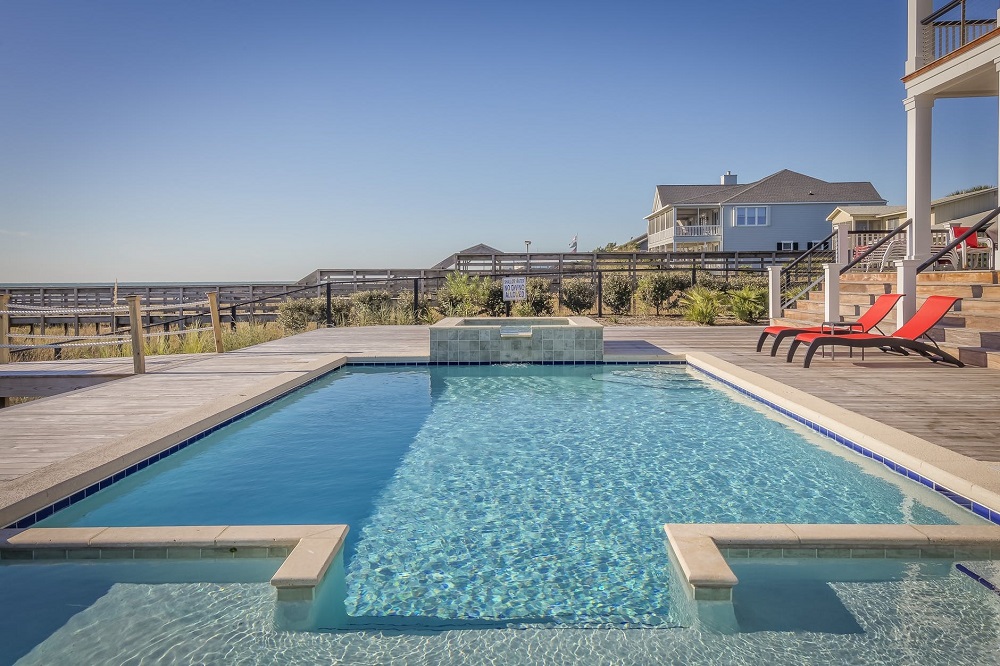
Pool Volume Calculators
Calculating Rectangular Pool Volume
Figuring out how much water a rectangular pool can be done fairly easily. However, the final calculations will vary significantly, depending on whether or not your pool is sloped at the bottom. In this case, we’ll assume that your pool doesn’t have a sloped base.
What you’ll need to know beforehand is the surface area of your pool (length × width) and the depth of your pool. Next, you’ll need to multiply everything by 7.5 to determine how many gallons of water your pool needs.
For instance, if the surface area is 10 × 20 feet with a consistent depth of 5 feet. The following formula will demonstrate how to calculate your rectangular pool’s volume with a consistent depth:
- Volume (Gallons) = Length × Width × Depth × 7.5 Gallons
- 7,500 Gallons = 10 feet × 20 feet × 5 feet × 7.5 Gallons
You can check out our Rectangle Pool Volume Calculator to simplify the calculations for you.
Rectangle Pool Volume Calculator
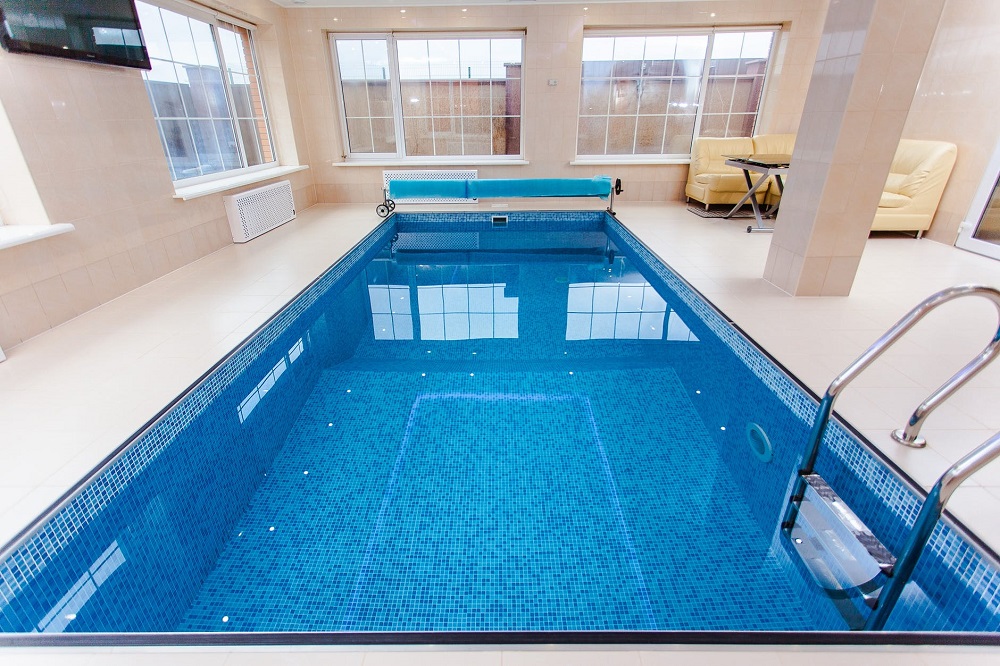
Calculating Rectangular Pool Volume with Shallow and Deep Ends
But what if you own a rectangular pool with a sloped floor? What if one end of the pool is deeper than the other end?
Figuring out the volume of a rectangular pool with shallow and deep ends is actually not that different from calculating a rectangular pool with a consistent depth.
Apart from knowing the surface area (length × width), you’ll have to average the deepest and shallowest depths of your pool. So, assuming your pool is 10 × 20 feet with depths of between 5 and 8 feet, you can input the figures in the following formula:
- Volume (Gallons) = Length × Width × (Shallowest Depth + Deepest Depth / 2) × 7.5 Gallons
- 9,750 Gallons = 20 × 10 × (5 + 8 / 2) × 7.5 Gallons
Again, we have a helpful Rectangle Pool Volume Calculator with Shallow & Deep End you can use to figure the total volume in gallons without using your phone’s calculator.
Rectangle Pool Volume Calculator with Shallow & Deep End
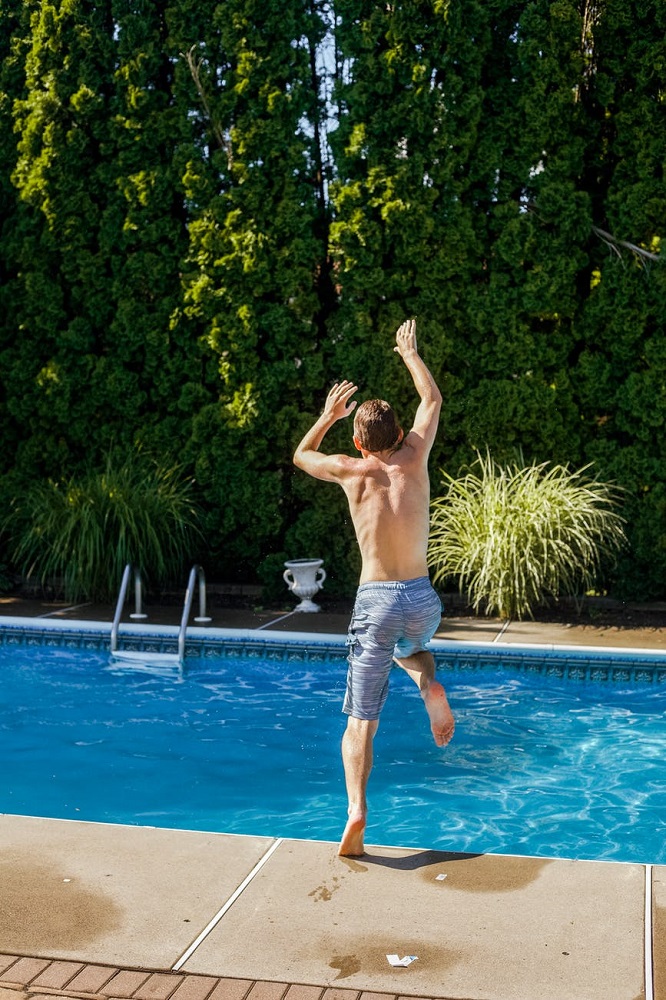
Calculating Round Pool Volume
Now, how do you go about calculating the volume of a round swimming pool? Again, it’s not that complicated, as long as you know what variables to look for.
Calculating the volume of round pools starts off with figuring out the radius of your pool. To get this figure, measure the diameter of your pool—i.e., the farthest distance between two ends of your pool. Now, take that figure and divide it by two to get the radius.
After figuring out the radius, all that’s left to do is measure the depth of your round pool or hot tub, which should have a consistent depth. You’ll also need to know pi, which we’ll simplify as 3.14 in this example.
So, for instance, if your pool measures 10 feet across and has a depth of 3 feet, simply input the figures into the following formula:
- Volume (Gallons) = 3.14 × Radius2 × Depth × 7.5 Gallons
- 1,766 Gallons = 3.14 × 25 × 3 × 7.5 Gallons
As long as you can measure the diameter of your pool, you won’t need to manually calculate its radius if you use our Round Pool Volume Calculator.
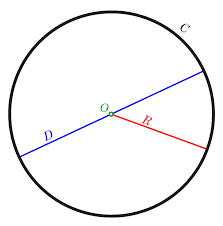
Round Pool Volume Calculator
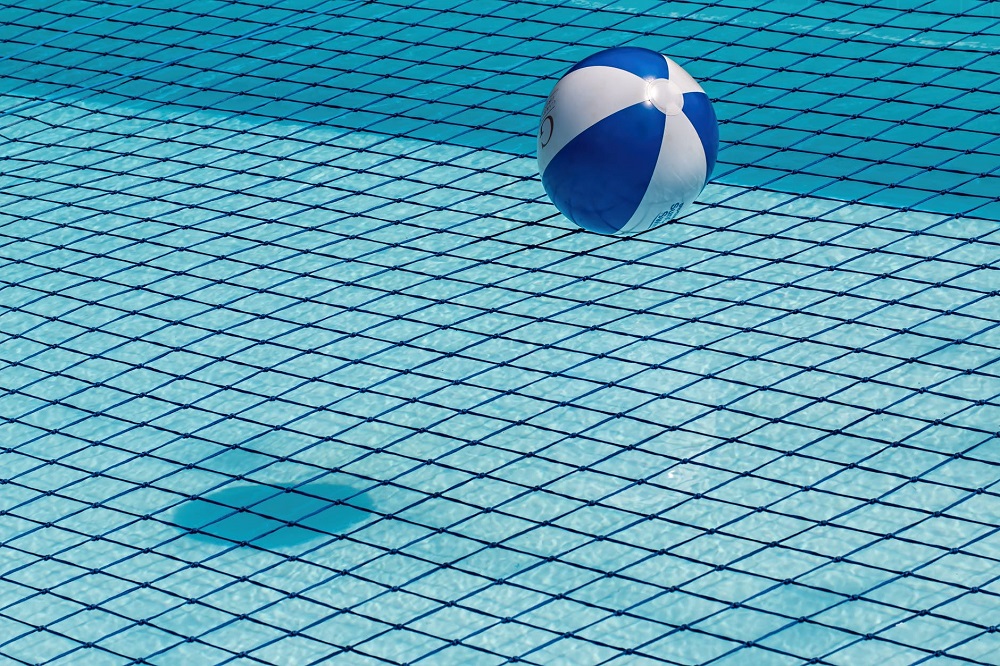
How Do You Calculate Irregular-Shaped Pools?
Now, here’s where things get a little complicated.
It can be difficult to measure the volume of a kidney-shaped pool or a pool that consists of all sorts of geometric shapes. While it might be exciting to build from the designer’s perspective, it can mean heck to maintain for the pool owner.
What you can do to measure the volume of an irregularly shaped pool is to “break” the pool into easy-to-measure pieces. If at all possible, you should “separate” the pool into rectangles, circles, and so on. The volume of a kidney-shaped pool would be easier to guesstimate if you could break it into two round-shaped pools.
Why You Need to Know the Volume of Your Pool
Now, you’re probably wondering to yourself, “Why do I need to know how much water fits in my pool? As long as I have enough water to fill it up, then what’s the problem?”
Well, the main issue is in terms of maintenance. Automatic pool cleaners, like suction and robovacs, have a set figure of how much water (in gallons) they can clean or filter per minute. To know how long it would take a robovac to filter your entire pool, you’d need to know how much water is in your pool in the first place.
Another crucial part of pool maintenance is knowing how much chlorine to introduce. The ideal chlorine level should be anywhere from 1 to 3 parts per million (PPM). To know whether you need to add more chlorine to your pool, you need to know how much water is in your pool in the first place.
One gallon of water is roughly 8.3 pounds in weight. In simple terms, to achieve the minimal 1-PPM figure, you’ll need one pound of chlorine for every 8.3 million pounds of water.
So, if your 10 × 20 × 5-foot rectangular pool needs 7,500 gallons of water, which is equal to 62,250 pounds, then you’ll need around 0.0075 pounds of chlorine to adequately clean your pool.
However, you should note that this figure is a rough estimate as chlorine is much denser than water, so this may give you a higher figure than 1 PPM.
